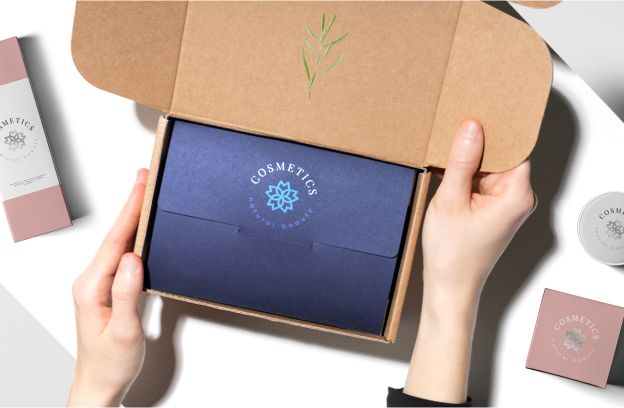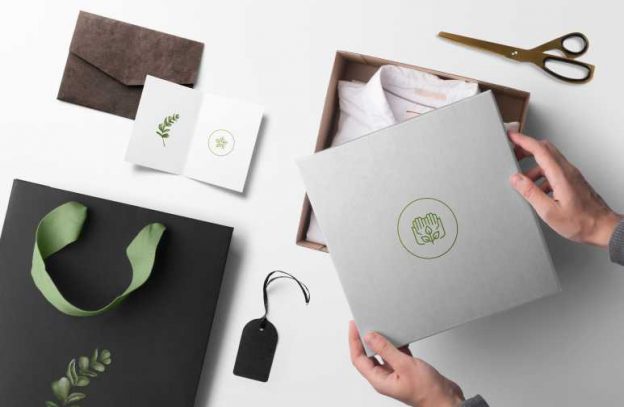June 10, 2021
Sustaining Circular Economy with Eco-Packaging
Packaging

Most businesses work in a linear economy based on a ‘Take, Make and Dispose of’ model. In a linear economy, raw materials are taken from natural resources, manufactured into products, which are disposed of as waste after use. Such a model treats natural resources as infinite and is a major cause of depleting natural resources. The concept of circular economy has come across as a model to help us rethink production and move towards processes that are more sustainable both for us and nature.
Many corporate giants such as Zara, H&M, Walmart have begun ‘zero waste’ initiatives by creating a circular economy. Following their footstep, a trend towards the circular economy model has begun all over the world. However, the packaging is one key area that stops businesses from reaching a truly circular economy. Merely 14% of global plastic packaging gets recycled; the rest is disposed of via landfills or dumped into oceans.
To reach a better understanding of Circular Economy and the role Packaging plays in achieving it, let’s explore each further.
What is a Circular Economy?
All that grows eventually returns to the earth and starts life again; that’s the cycle of nature. Inspired by this self-sustaining model so natural to our being, the Circular Economy has come forth as a nature-friendly mode of sustenance based on ideas of ‘Make, Use, Return’.
Circular Economy, in contrast to Linear Economy, treats raw materials like they’re finite and focuses more on waste prevention.
A company in this economy doesn’t just recycle a product but maintain ownership of them or a part of it to be repaired, refurbished, and reused. It makes companies more like service providers rather than commodity sellers, which helps them move away from the production-based economic system. This model compels manufacturers to manage their waste efficiently, reuse it as much as possible, and reduce their dependence on natural resources.

Packaging for a Circular Economy
Companies often outsource their packaging needs or are stuck with plastic-based alternatives for a cheaper, more efficient packaging material. Most of the plastic that goes into making various packaging and branding materials is made for single-use and cannot be disposed of sustainably. However, many sustainable alternatives have appeared in the market that can support your goals of a circular economy. Let’s explore a few well-known examples.
- Compostable Packaging
Compostable packaging put plainly, is packaging that is made of compostable materials and converted into natural gasses via composting. This type of packaging makes it possible to convert the materials for a sustainable energy alternative, reducing the waste by multitudes. All parts of the packaging must break down during composting, which also includes the printing ink. Key compostable packaging materials include paper, fiber, corrugation boxes in small pieces, etc.
- Recyclable Packaging
Recyclable packaging is packaging that’s made of materials that can be repurposed again after use. Such materials include glass, paper, metal, and plastics in some cases. However, it crucial to consider the recycling rate of each material to choose the most sustainable alternative. Corrugation is known to have the highest recycling rate among all packaging materials. Also, the manufacturing process and re-processing costs may not be economically viable while using materials such as metals or glass.
- Reusable Packaging
Reusable packaging is made of sturdy materials so that it has a longer shelf life and can be repurposed for reuse. Studies have shown that at least 80% of consumers are likely to reuse packaging for purposes of storage etc. Glass containers, rigid boxes, and metal boxes are often find new life with the consumers. Their reusability prevents waste caused by disposal while giving the brand an effective way to connect with consumers. However, reusable packaging should always have the potential recyclable in the long run to better impact the environment.
In an overview, it is clear that without having packaging that’s either compostable, recyclable, or reusable, the ideals of a circular economy cannot be achieved. Different materials offer different potential benefits; however, paper materials can be utilized for composting, recycling, and reuse in the highest proportions. But questions such as the source of these materials play an essential role in defining their sustainability. At LYNX, we offer bespoke sustainable packaging solutions for entire supply chains in eco-friendly paper materials. All our packaging materials are sourced from environmentally responsible suppliers and bear sustainable certifications. Connect with us, and let’s boost your efforts for a Circular Economy with our sustainable packaging.

Trending Tea Packaging Types for 2021
Two of the most common drinks in the world, tea & coffee make up to a 150 billion US dollar industry worldwide. With the market flooded with manufacturers, branding strategies such as packaging, labelling etc.

How to make your Cosmetics Brand more Sustainable?
One of the major challenges that beauty and cosmetic packaging face today is addressing their impact on the environment.

Custom Sustainable Packaging-A Game-Changer
In the trying times around the world, it’s now an understood norm to adapt and embrace sustainable practices as much as it is possible to.